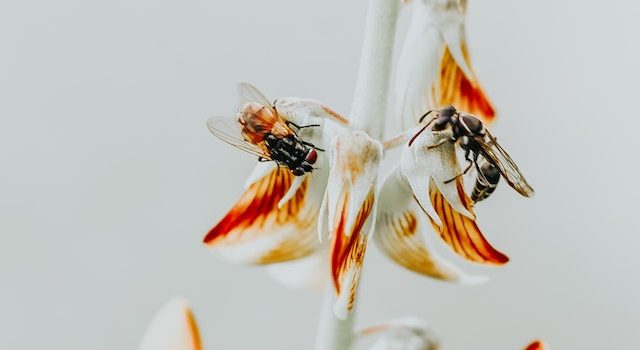
The phenomenon of flies experiencing accelerated aging after witnessing death is an intriguing area of research that sheds light on the complex interplay between social interactions, stress, and aging processes. While the exact mechanisms are not fully understood, here are some possible explanations for why flies may exhibit accelerated aging after seeing death:
1. Social Stress Response: Witnessing death in flies can induce a social stress response. This response involves the activation of physiological and molecular pathways that regulate stress hormones, such as corticosteroids. Prolonged or intense stress can have detrimental effects on cellular and molecular processes, including accelerated aging. The stress response triggered by witnessing death may contribute to the observed aging-related changes in flies.
2. Disruption of Homeostasis: The presence of a dying conspecific (same species) might disrupt the social and environmental homeostasis of flies. This disruption can lead to physiological imbalances and dysregulation of various cellular processes involved in maintaining normal function and aging. The perturbations caused by witnessing death could contribute to an accelerated decline in health and an increase in mortality rates.
3. Transmission of Pathogens or Toxins: The act of dying or dead flies might release harmful substances, pathogens, or toxins into the environment. These substances can potentially impact the physiology and health of the remaining flies, leading to accelerated aging and increased mortality. The transmission of pathogens or exposure to toxins from dying individuals may trigger immune responses, oxidative stress, or other detrimental effects that contribute to accelerated aging.
4. Altered Nutritional Status: Witnessing death could also influence the nutritional status of flies. Flies may alter their feeding behavior or consumption patterns in response to the presence of dying conspecifics. Changes in nutrient intake and availability can impact various metabolic pathways and cellular processes related to aging. Disruptions in nutrient sensing or metabolism could contribute to accelerated aging phenotypes.
5. Evolutionary Adaptations: Accelerated aging after witnessing death may be an evolved response that benefits the survival and reproduction of the remaining flies. In nature, resources can be limited, and competition for survival and reproductive success is fierce. By accelerating aging and increasing mortality rates in the presence of death, surviving flies may optimize resource allocation, reduce competition, and enhance their chances of reproductive success.
It’s important to note that the mechanisms behind the accelerated aging observed in flies witnessing death are still an active area of research. Further studies are needed to unravel the precise molecular and cellular processes involved. Nevertheless, the findings provide valuable insights into the complex interplay between social interactions, stress, and aging, highlighting the intricate connections between social experiences and the biology of aging.










